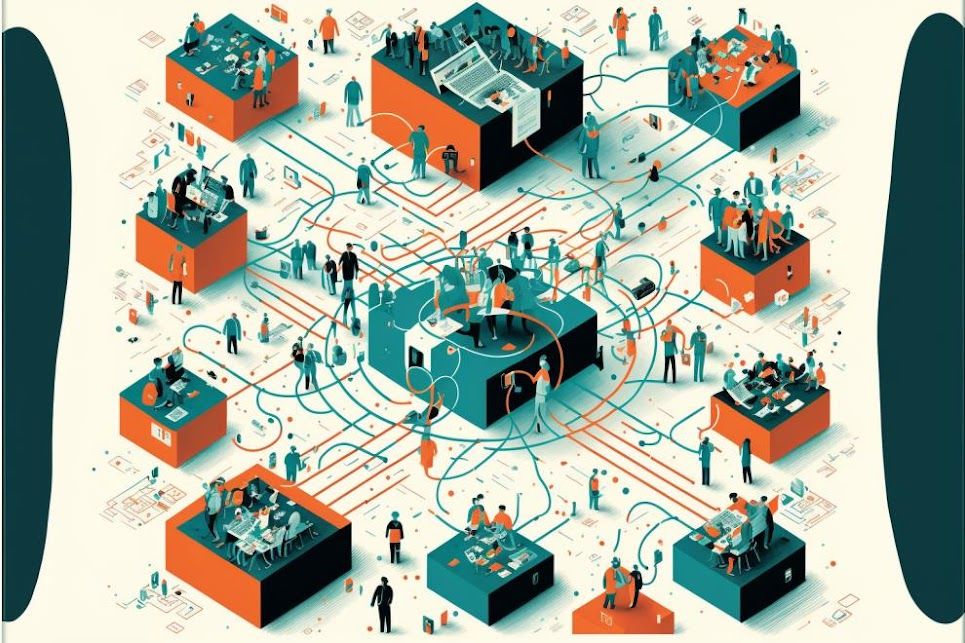New research predicts what DAOs will look like in the future

Short for decentralized autonomous organizations, DAOs have experienced significant growth over the past year. Notably, more than 2,800 DAOs kicked off their governance activities between May and October 2022. But despite the impressive numbers, the DAO trend is only just starting and could evolve in different directions. A recent foresight report dubbed “The Future of DAOs 2035” provides some insight into the current state of DAOs and explores several plausible future scenarios for decentralized organizations.
Created by Joe Carpita, the research informing the report was conducted over the course of eight weeks, between August and October 2022. Even more interesting is the fact that the report is presented as a Discord server. According to Joe, this decision was because “a lot of DAOs use Discord servers as a platform for communication and a hub for interaction.” The report is divided into three sections – The Present, Future Scenarios, and The Next Steps.
The Present
For the uninitiated, a DAO can be loosely defined as a self-governing organization, managed by a group of people with shared interests. It is blockchain-based, collectively owned, and without a central authority. But despite this seeming cliché definition, Joe argues that there is no one-size-fits-all definition for DAOs.
Regulation is already here
While the crypto space had often been slammed with the “wild west” tag, there have been growing efforts to regulate the space, DAOs inclusive. On the part of DAOs, a handful of them has moved to incorporate legal entities. And on the part of regulators, the states of Wyoming & Tennessee passed legislation legally recognizing DAOs in 2021 and 2022, respectively. In general, there is an increase in the number of bills to regulate & legalize DAOs for tax purposes.
Money is flowing into DAOs
As of December 11, $9.6 billion was being held in DAO treasuries across all networks. Comparatively, the total assets under management (AUM) for DAO treasuries was $380 million in January 2021. VCs are also waiting on the sidelines, ready to enter the market. In particular, the crypto arm of Andreessen Horowitz’s venture capital fund, a16z crypto, recently announced a $4.5 billion fourth investment fund to invest in web3 companies, including DAOs.
Voter apathy is a problem
In the course of his research, Joe concluded that DAOs may need a certain amount of centralization. One of the experts he reportedly spoke to claimed that it took “months and months to get the DAO members to vote to agree to change a couple lines of text within a Discord.” Joe explained:
The decentralization promised by early DAOs is already facing challenges in the form of a lack of engagement from token holders [...] Some DAOs are already recognizing the need to restructure and centralize decision making to a degree to avoid stagnation and keep up the momentum of the DAO.
The Future
According to Joe, the future of DAOs in the near future might fall into one of the following categories – DAO on the road, UpsideDAOn, LockDAOn, or SlowDAOn. He analyzed each of these scenarios based on six change drivers – legitimization, corporatization, oracle-ization, tokenization, centralization, and socialization.
DAO on the road
Under this scenario, more tech-friendly states will pass pro-DAO bills. However, the US government will continue to drag its feet on providing clear regulations. Similar to Ripple Labs, the treasury of some DAOs might actually grow large enough to catch the attention of the IRS and the Department of Justice.
On the corporate front, only the most tech-centric companies will explore DAOs, with most companies failing to adopt a full DAO structure. Meanwhile, traditional corporations that currently control the Big Data market might stall the growth of the sector due to their unwillingness to provide access to data.
UpsideDAOn
There is the possibility that the US government “blindly” succumbs to the recommendations of VCs and crypto proponents to pass legislation that legally recognizes DAOs at the federal level. This is expected to remove the complexities and entry barriers of DAOs with international community members.
If the DAOs gravitate towards the UpsideDAOn scenario, corporations will run “small DAO experiments” and some might become stateless organizations. Web2 will also be connected to the blockchain, thanks to wide “oracle-ization” enabling smart contracts to leverage Big Data.
The barrier of entry to DAOs is expected to drop drastically and creating DAO governance and incentives may become as simple as checking a few boxes. People might also be able to make a career out of “full-time active contributions across DAOs.”
LockDAOn
Some countries like China have already moved to clampdown on crypto-related activities. In a rather extreme case, the US government might move to ban all private cryptocurrencies in favor of its CBDC (central bank digital currency). If this happens, DAOs may be pushed out of the market as asset holders rush to liquidate their holdings.
With little incentive to continue, many corporations will permanently leave the space. Similarly, Big Data will not bother to convert their data to a blockchain-friendly oracle. Bottom line is that DAOs should shrink into oblivion if this scenario plays out.
SlowDAOn
Blockchain tech is already disrupting a number of industries, and some traditional players might view it as a threat. In his final scenario, Joe suggests that corporations might lobby against Web3 tech, forcing the US government to create legislation that only recognizes DAOs for tax purposes while stifling the attractive aspects of the tech.
As a result, venture capital flowing into the sector reduces, with large corporations occasionally interfacing with DAOs as vendors. Meanwhile, the adoption of the early DAO structure might be restricted to early-stage companies.





